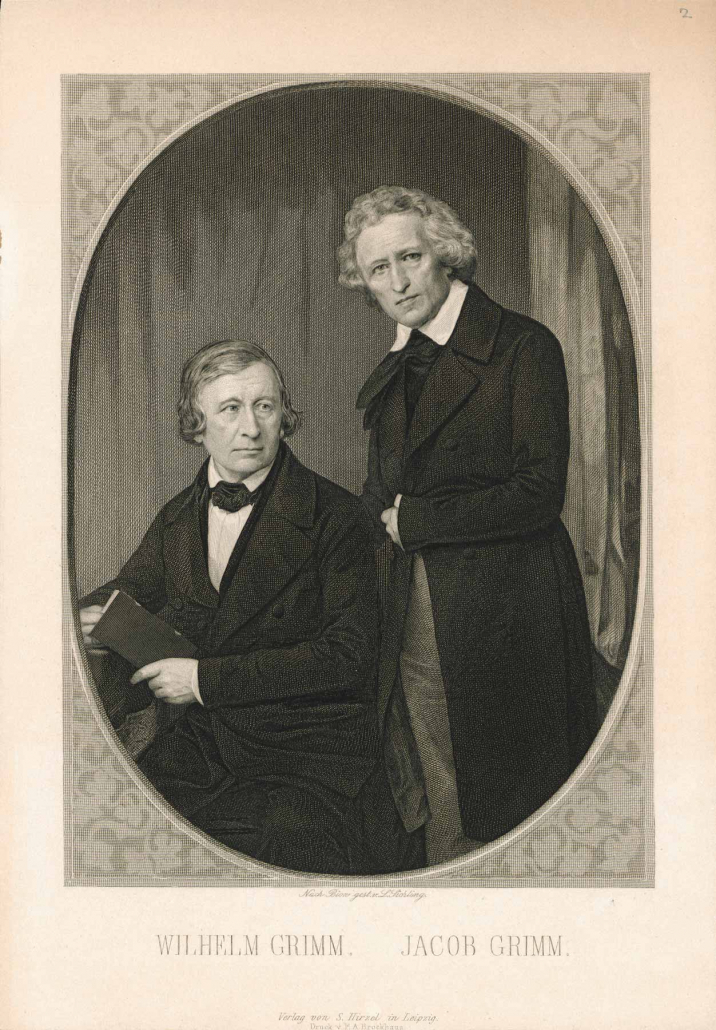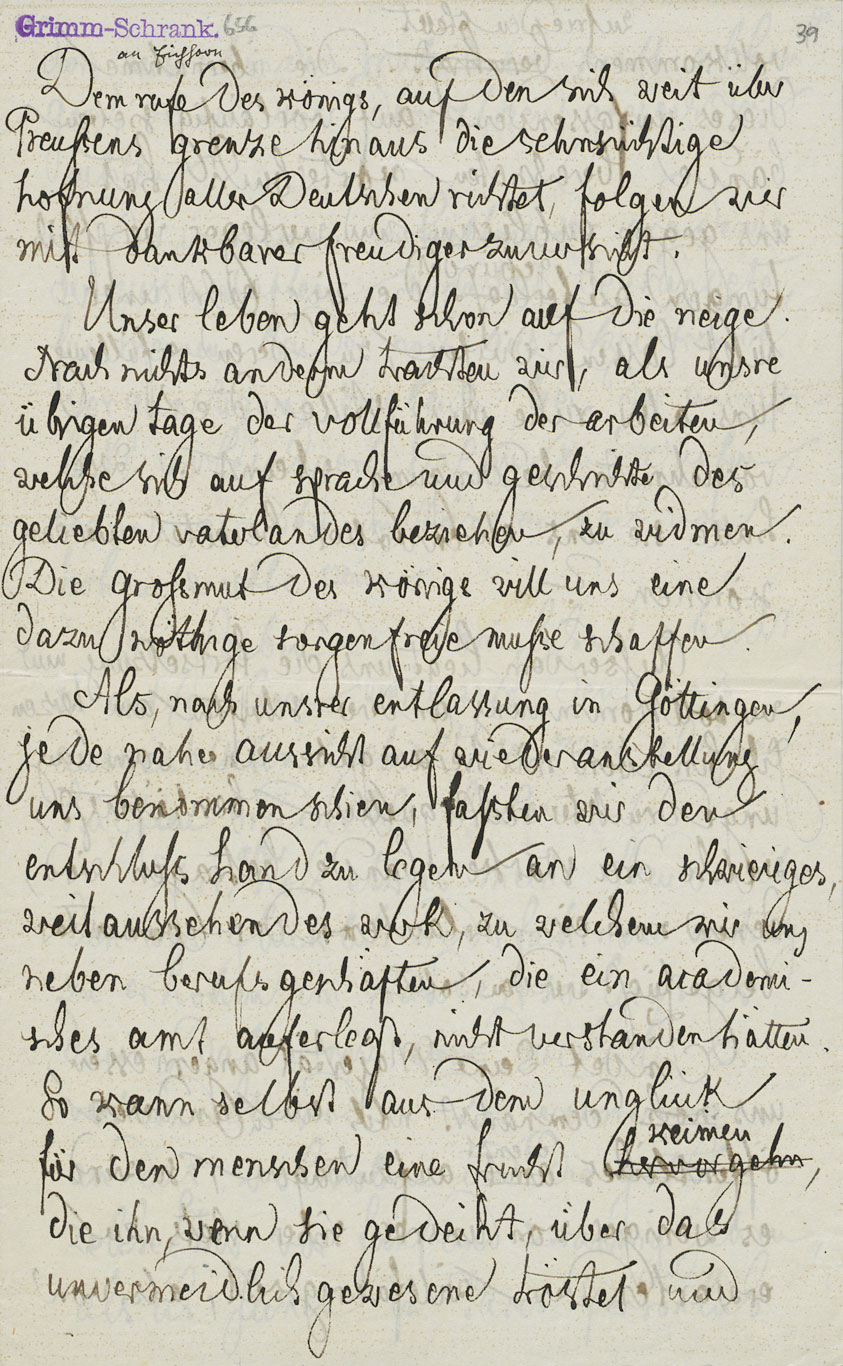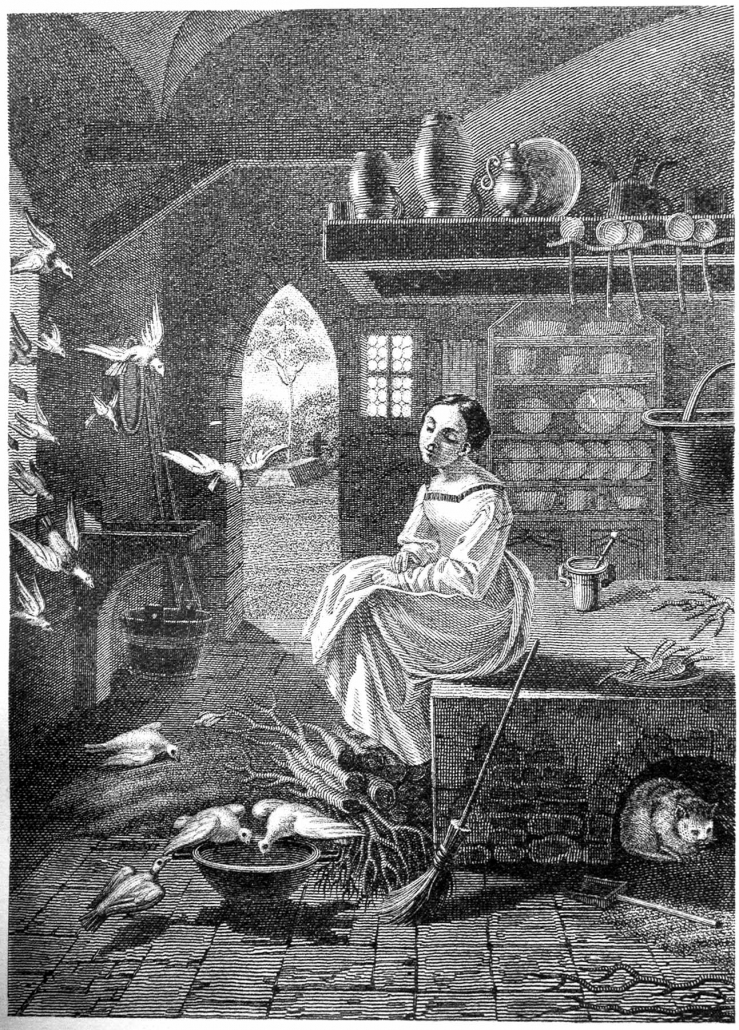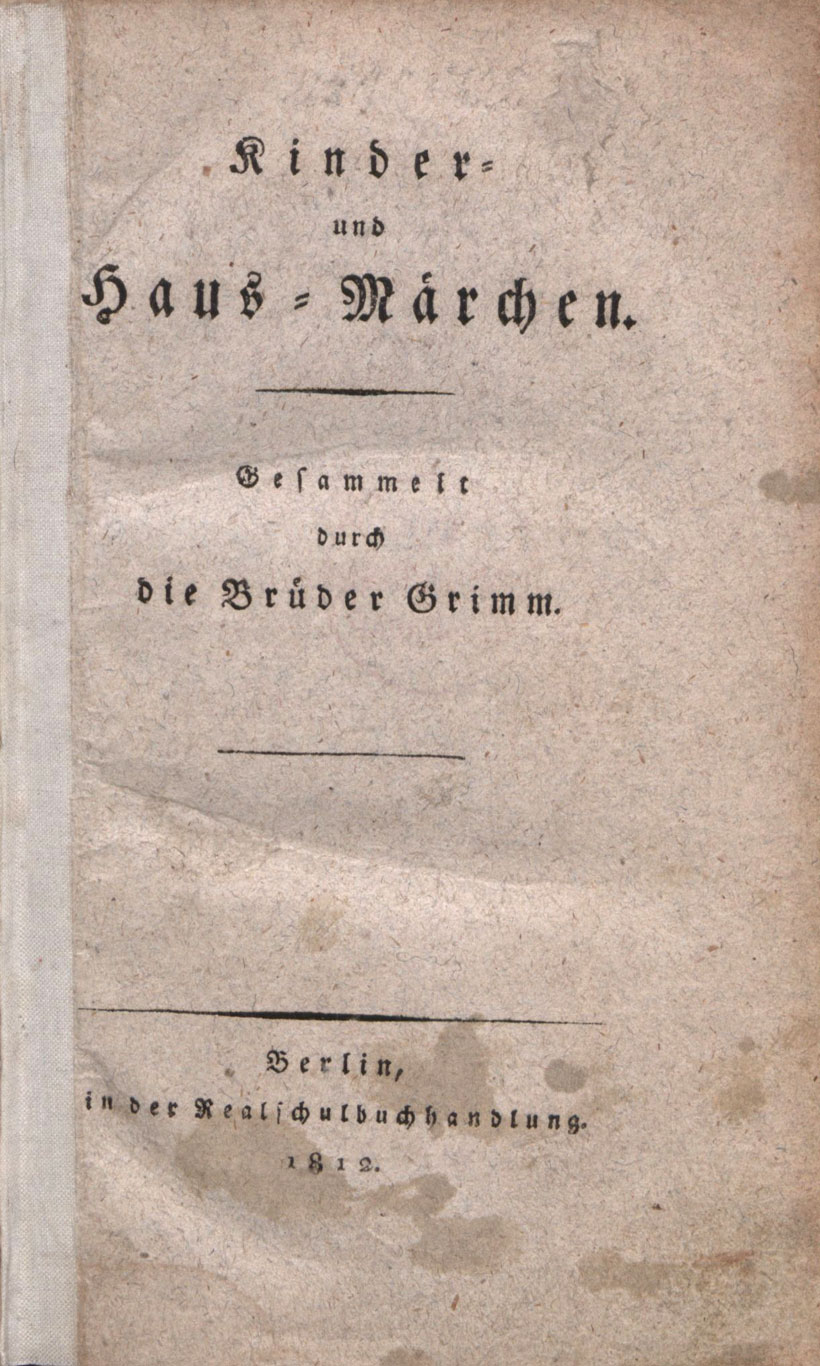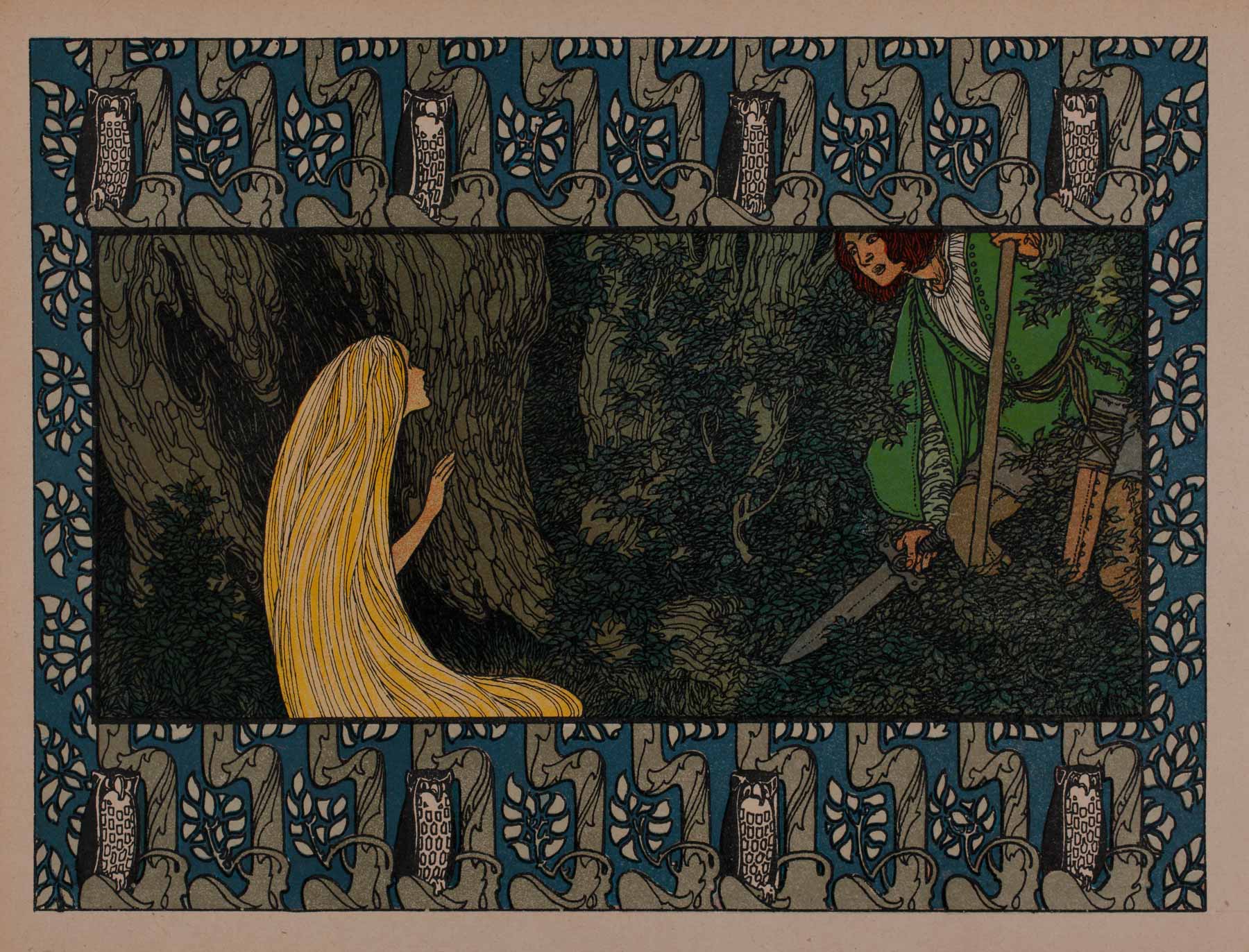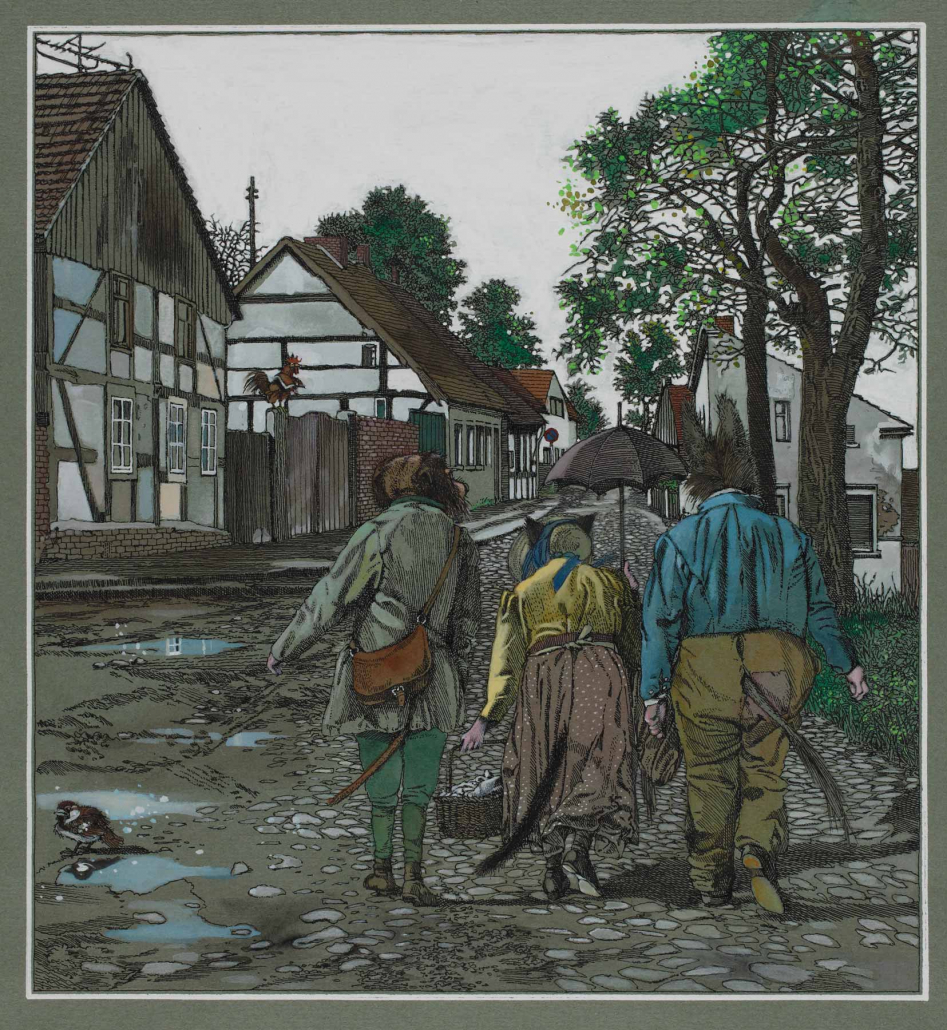6
Scholars and collectors of folk tales
Jacob und Wilhelm Grimm in Berlin
Lazarus Sichling: Jacob and Wilhelm Grimm, steel engraving of a daguerreotype by Hermann Biow, before 1854. digital copy
Berlin – Centre of Science
Founded in 1810 on the intiative of Wilhelm von Humboldt, the Berlin University soon became the most important of its kind. In conjunction with the Akademie der Wissenschaften and the Königliche Bibliothek, Berlin became a unique centre of science in Central Europe, which attracted many important scholars and researchers from the most different disciplines. Their eminent scientific achievements are still reflected in the collections of the Staatsbibliothek.
In 1837, the professors Jacob and Wilhelm Grimm, who were members of the ‘Göttingen Seven’, were dismissed after they protested the repeal of the constitution by the King of Hanover. With the help of Bettina of Arnim, Friedrich Karl of Savigny, and others, the brothers were invited to join the Academy of Sciences in Berlin in 1840. Until their respective deaths in 1859 and 1863, they lived and worked in the city. At the academy they continued their studies in several areas of academia but focussed mainly on the study of linguistics. During this time, they worked tirelessly on the Deutsches Wörterbuch, the largest and most comprehensive dictionary of the German language until their deaths.
The literary estate of the brothers Grimm
at the Staatsbibliothek
Jacob Grimm: draft of a letter to Johann Albrecht Friedrich Eichhorn, Kassel, 8 November 1840. SBB-PK. Public Domain Mark 1.0
The literary estate of Jacob and Wilhelm Grimm is without a doubt one of the largest and most significant and complete academic legacies of the 19th century. It was given to the Königliche Bibliothek by the brothers’ heirs in 1899. Their literary estate contains around 1,900 anthologies (manuscripts bound together in one unit) and bibliographical material, which all together amount to a length of 40 metres. It also includes important printed copies of their own publications, manuscripts, and other material such as notes, excerpts, and documents on the various areas of research.
In addition, it incorporates over 10,000 letters, and various documents about their political activities (Göttingen Seven, the National Assembly in Frankfurt am Main 1848) as well as their education, career, and personal documents (calendars, diaries, portraits, and family albums). The large number of awards, diplomas, and honorary memberships demonstrate the high esteem in which the brothers were held worldwide for their work.
Deutsches Wörterbuch, galley proofs of the letter F with corrections done by Jacob Grimm.
Kinder- und Hausmärchen of the brothers Grimm
Jacob and Wilhelm Grimm: Kinder- und Hausmärchen, small edition, Berlin, 1825. digital copy
After successfully publishing an abridged edition in English with illustrations by George Cruikshank (1792–1878) in London in 1823, Wilhelm Grimm proposed to print a paperback edition in Germany as well. This ‘small edition’ significantly increased the popularity of the collection of fairy tales. While the ‘large edition’ was printed in Göttingen, the ‘small edition’ was printed in Berlin. Up until the 5th edition the book was published by Reimer and afterwards by Wilhelm Besser (1809–1848) and his business successor Franz Duncker (1822–1888).
Jacob and Wilhelm Grimm started to collect folk tales in 1806. On a visit to Kassel in the spring of 1812, Achim von Arnim encouraged the brothers to publish the fairy tales and just a few weeks later Jacob Grimm asked him to find a suitable publishing company. In June 1812, von Arnim sent a message from Berlin, saying that Georg Andreas Reimer (1776–1842) wanted to sell the fairy tales in his bookshop of the Königliche Realschule. Six months later on 20 December 1812, the first volume of Kinder- und Hausmärchen came out. The second volume of the first edition was published in 1815 and a second edition in 1819, both with the same publisher.
Jacob and Wilhelm Grimm: Kinder- und Hausmärchen, large edition, Berlin, 1812. digital copy
The collection of Kinder- und Hausmärchen
in the Staatsbibliothek zu Berlin
The Children’s and Young People‘s Book Department aims to collect as many different editions and copies of Kinder- und Hausmärchen as possible. Its collection ranges from the first ever published to the most recently published. Furthermore, it contains illustrated versions from all over the world, important translations, and modern interpretations.
In the mid-19th century, the fairy tales of the brothers Grimm gained new heights of popularity and were in a way viewed as ‘national cultural heritage’. After copyright protection was lifted in 1893, the number of publications increased exponentially, a development which can be seen in the numerous copies of the collection.
Jacob and Wilhelm Grimm: Marienkind, by the artists Heinrich Lefler and Joseph Urban, Mainz, 1904. SBB-PK. Public Domain Mark 1.0
Early editions of individual fairy tales as well as historical broadsheets and original illustrations are some of the rarer items of the collection. The collection of Kinder- und Hausmärchen, which contains a large amount of primary literature and a wide range of reference books, is an important addition to the literary estate of the brothers Grimm in the manuscript department.
Klaus Ensikat: original illustration of Die Bremer Stadtmusikanten, Berlin, 1994. SBB-PK © Klaus Ensikat

